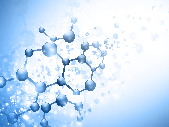 From small ions like phosphate, herbicide degradation to metabolites, oligosaccharides, peptides, and proteins. How is your lab analyzing polar molecules? The reason I ask is there is a saying, if you have a charged or polar molecule, look to capillary electrophoresis (CE) first. While liquid chromatography (LC) is an ideal front-end separation tool for many types of molecules, as the following poster points out, “From Small to Very Large, Orthogonal, Sensitive Polar Molecule Analysis by CESI-MS,” there are some situations that call for CE over LC analysis. For those of you that are not familiar with CESI-MS, it is the combining of CE separation with electrospray ionization, into one dynamic process, within the same device. View the Poster >
From small ions like phosphate, herbicide degradation to metabolites, oligosaccharides, peptides, and proteins. How is your lab analyzing polar molecules? The reason I ask is there is a saying, if you have a charged or polar molecule, look to capillary electrophoresis (CE) first. While liquid chromatography (LC) is an ideal front-end separation tool for many types of molecules, as the following poster points out, “From Small to Very Large, Orthogonal, Sensitive Polar Molecule Analysis by CESI-MS,” there are some situations that call for CE over LC analysis. For those of you that are not familiar with CESI-MS, it is the combining of CE separation with electrospray ionization, into one dynamic process, within the same device. View the Poster >
Complex Polar Molecules
Let me explain. Although effective, analysis by traditional LC-MS methods can present challenges that are addressed by the aqueous nature of capillary zone electrophoresis (CZE)-based separations. Therefore, if you have a choice of using LC-MS or CESI-MS when it comes to complex or polar molecules, the latter is ideal for your testing purposes since you can see and get high-resolution separation of PTMs missed by LC-MS methods. Such is the case for large molecules like intact monoclonal antibodies, and for small molecules, CESI can separate geometric isomers and isobaric compounds prior to mass spec analysis.
Want to see how CESI-MS plays out in the lab? View the Poster and get to know how molecules can be separated to differentiate their subtle structural changes. Collectively you’ll discover how the examples illustrate the simplicity of buffer systems that allow for the analysis of a wide range of highly relevant polar molecules by CESI-MS like phosphonate/phosphate for herbicide analysis to metabolites, oligosaccharides, and intact proteins.
What is more, you will also discover how you can improve the sensitivity, speed, and comprehensiveness of polar biomolecule analysis such as the separation of polar herbicide glyphosate and fungicide fosetyl aluminum. It’s not just polar ions the researchers put to the test either. Read about the results of anionic metabolites, glycans, and intact proteins too.
Find out how you can save time and resources using CESI-MS technology and read more about CE technology >






 Contact Support
Contact Support
0 Comments